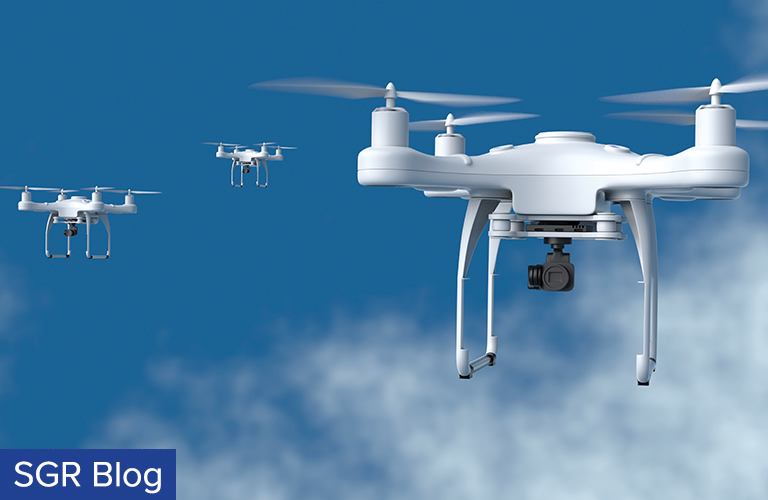
…with More Changes on the Way
On Friday, October 5, 2018, the FAA Reauthorization Act of 2018 was signed into law. Among other things, the Act includes key provisions which help shape the current legal landscape surrounding unmanned aircraft systems (UAS), also known as drones. The Act also includes several directives for continued study of UAS, which means that more changes are likely on the way.
UAS, commonly known as “drones,” have dramatically improved the way many industries operate and do business. Current UAS technology already offers several commercial benefits, such as efficient surveillance and the facilitation of intensive operations, with future technology promising more sophisticated applications, such as long-range surveillance and the transportation of objects and people. However, some businesses have been reluctant to integrate UAS into their day-to-day operations due to the uncertainty of how UAS will be treated from a legal perspective.
UAS operated for commercial purposes are primarily regulated by the Small UAS Rule (Part 107) implemented by the Federal Aviation Administration (FAA), as well as applicable state and local laws. While the current UAS laws and regulations address baseline safety and registration concerns, there are many uncertainties which Congress and the FAA chose to not address until UAS technology and integration is better understood. The FAA Reauthorization Act of 2018 is the direct product of continued UAS study which seeks to clarify some uncertainties in the UAS legal landscape.
The FAA Reauthorization Act of 2018 directs the FAA and other federal agencies to adopt several substantive changes to Part 107 and related UAS rules. Among other things, the Act directs (1) the FAA to adopt a uniform framework for regulating UAS operated for commercial and recreational purposes, (2) the Governmental Accountability Office, the Department of Transportation and the National Telecommunications and Information Administration to study UAS privacy concerns, such as how personal data collected by UAS may be used, (3) the FAA to create a pilot program that tests UAS remote identification technologies, (4) the FAA to consider whether to issue blanket waivers for certain UAS commercial uses, as opposed to such waivers being granted on a case-by-case basis, and (5) the FAA to create rules which permit the carriage of property by commercial UAS operators within the United States.
The adoption of the FAA Reauthorization Act of 2018 is an important step towards shaping the UAS legal landscape. Businesses looking to take advantage of the benefits that UAS offer should positively view the Act, as well as related rules and regulations that will follow, as an attempt to address some of the legal uncertainties that UAS operations pose and expand upon the exciting possibilities that UAS can offer.

